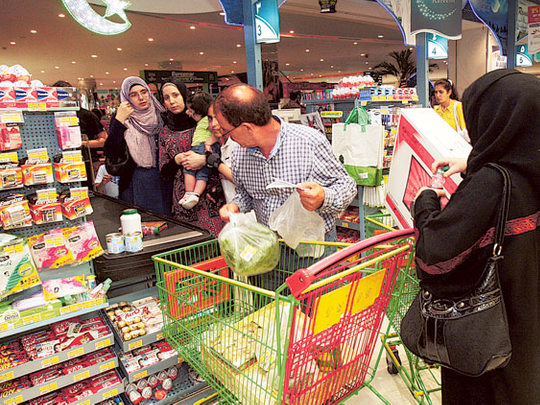
In these post-crisis times, inflation has almost become regarded around the world as a good thing. Certainly it seems the settled position of both policymakers and commentators that the opposite condition, deflation, is a very, very bad thing indeed.
As discussed here last week, governments and their agencies the central banks are doing their utmost to keep prices rising, to enable the steady diminution of accumulated debt on the one hand, and prod consumers into spending rather than saving their cash on the other.
Such is the fright that the potential for deflation creates that the managing director of the International Monetary Fund (IMF), Christine Lagarde, last week referred to it as an “ogre that must be fought decisively”. Doubtless, with special concern for the workability of the Eurozone, that warning was heartfelt.
Now that governments have cannily shifted both household and market expectations to a target (not limit) of 2 per cent inflation as being sound and responsible, any rate below that in the West is viewed officially as unacceptably low.
That subtle policy shift is in fact a rod for all our backs, since it has sponsored lower interest rates than would otherwise have prevailed, so enabling faster credit growth and the basis for less sustainable forms of economic growth, as well as volatility of financial markets.
Trade-off
Such a relatively hidden cost relates to the enduring belief among many mainstream economists that there is actually a benefit to be exploited from a particular policy intervention in the economy — namely that a bit more inflation can be traded off against a bit less unemployment, as if to imagine that the natural business cycle can be manipulated in such a way.
It is that kind of thinking that has led to the trap that the world is still climbing out of, one of perpetually low interest rates, with its distorting effects on behaviour, notably in favouring financial asset markets over steadier, inclusive forms of generating real growth.
Besides the West, China too is now struggling to contain the effects of its recent history of excessive credit creation, with ramifications for us all. At the same time, both in this region and elsewhere, policymakers may need, remarkably, to resort to special measures to restrain re-emerging property speculation, given that interest rates remain pinned at subterranean levels in real terms.
As to the cost-of-living per se, the range of inflation rates prevailing across the GCC countries (typically 3-4 per cent likely in 2014) would, on the face of it, suggest something akin to a picture of health in the global context.
Apart from the accommodative monetary policy that supports such figures, facilitated by recovering trends in bank lending, there is very substantial fiscal impetus providing backing as well.
The Institute for International Finance (IIF), whose review of the region also was cited last week, noted that government spending has been growing at an average 11 per cent per annum during 2003-13.
A recent research piece by Emirates NBD gave a sense of the inflationary dimension. It observed that broad money in the UAE grew at its fastest in five years in the latest measure, and went on to forecast consumer price inflation of 3.6 per cent in 2014 (from 2.3 per cent in 2013) “as higher housing costs feed through...and rising input costs are increasingly passed on”.
Those numbers may not appear especially threatening. Indeed, regional inflation is “relatively benign”, Jason Tuvey, economist at Capital Economics told me, with the “possible exception of Saudi Arabia, where the recent crackdown on migrant workers could lead to a rise in labour costs”.
Analytical review
Yet, last year a comprehensive analytical paper by Gulf One Investment Bank intimated that disinflation (slower inflation, rather than deflation, which means lower prices) would still be helpful to achieve, as a boost to competitiveness, “a springboard for job creation and a mechanism for wealth creation”.
“By virtue of having the largest share in the CPI [consumer price index] basket, food inflation remains the main driver of inflation in most GCC countries,” the report observed.
Moreover, “with a population growth rate of 2.3 per cent per annum, the Gulf’s population is expected nearly to double from 35 million in 2006 to 60 million in 2038, thereby putting extraordinary pressure on the demand for water and food.”
Crucially, though on a somewhat technical note, ‘shadow inflation’ (the excess of monetary growth over the growth rate of GDP) is a concern, suggesting too much consumption and non-productive activity in the economy. It means also that the rates published by the official statistical agencies “often tend to underestimate the extent of ‘real’ inflation”.
As for the critical dollar peg, “this is not going to change anytime soon”. Like other factors, its consequences “could only be mitigated through diversification of production and exports, [and] reserve currencies”, which would channel funds into productive activities.
Gulf One’s message was that policymakers should not be lulled into a false sense of security, but instead engage seriously in resource-diverting structural reforms.
In this region, if not so evidently elsewhere, inflation remains arguably more a problem than a solution.











